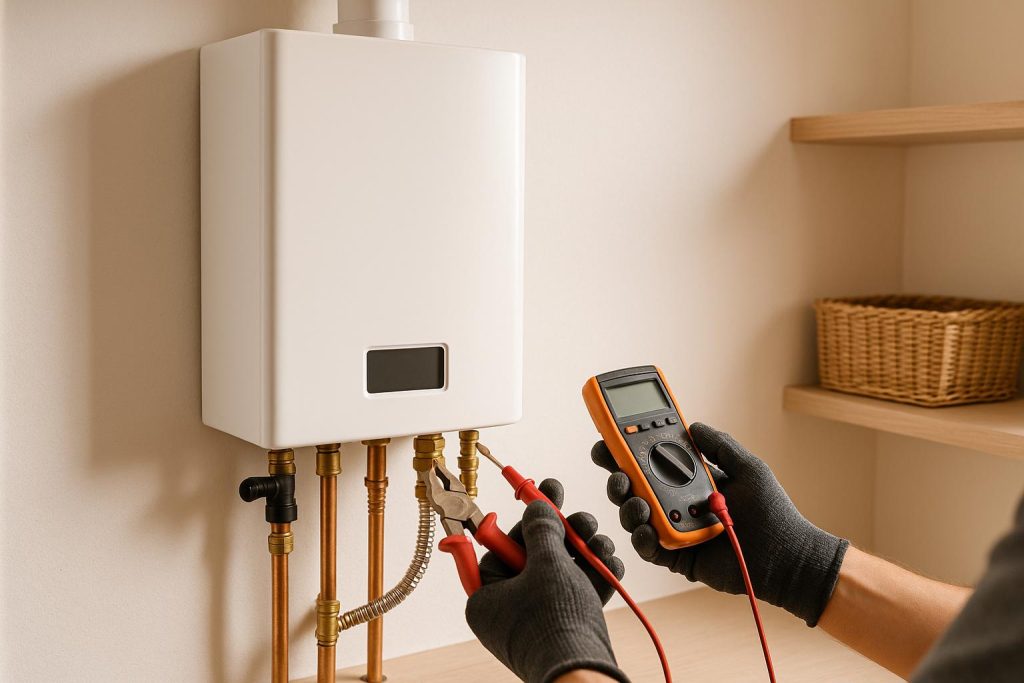Your garbage disposal quietly does its job every day, but when it starts to stink, slow down, or make weird grinding sounds, it reveals its darker side. If you ignore it, even the strongest disposal can end up with smelly goo, food chunks stuck tight, or even plumbing disasters that you didn’t see coming. The good news is that you can keep it fresh and working right without turning to strong chemicals or costly gadgets.
This guide gives you the top tricks every homeowner needs to know for garbage disposal Cleaning hacks. With simple pantry items like baking soda and some easy monthly routines, you can keep your disposal smelling nice, working great, and lasting longer. Best of all, these methods are safe and effective.
Why Garbage Disposal is Essential
It’s not just about the smell.
A dirty disposal isn’t just unpleasant, it’s a breeding ground for bacteria, mold, and foodborne pathogens. According to the NSF (National Sanitation Foundation), kitchen sinks and disposals are among the dirtiest places in a home, often more contaminated than toilet seats. Food particles stuck under the splash guard or inside the grind chamber decompose quickly, leading to foul odors and unhealthy air.
Blocked or poorly maintained disposals can also strain your plumbing system. Grease, starchy waste, and coffee grounds accumulate in pipes, leading to clogs that require professional repair.
Key Benefits of Regular Garbage Disposal Cleaning:
- Eliminates foul kitchen odors
- Prevents drain blockages and backups
- Extends the lifespan of your unit (up to 10+ years)
- Improves grinding efficiency
- Keeps your kitchen environment more hygienic
Garbage Disposal Cleaning Hacks
1. Use Ice Cubes and Rock Salt
Toss a handful of ice cubes and about half a cup of coarse rock salt into your disposal. Turn it on while running cold water.
This combo scrubs the chamber walls and removes stuck-on debris from the blades. It’s quick, effective, and completely natural. The ice knocks food residue loose while the salt acts as an abrasive cleaner. You’ll hear a grinding sound that’s the cleaning in action.
Pro Tip: Add a slice of lemon with the ice for odor control.
2. Baking Soda and Vinegar Bomb
Pour 1/2 cup of baking soda, followed by 1 cup of white vinegar, down the disposal. Let it sit and fizz for 10–15 minutes, then flush with hot water.
The chemical reaction lifts grime and neutralizes bad smells. It’s also septic-safe and highly effective at reducing organic buildup along the sides of the chamber.
Fact: This method can kill up to 99% of common kitchen bacteria when used regularly.
3. Citrus Peel Refresh
Grinding lemon, lime, or orange peels freshens your unit with natural oils that clean the blades and leave a zesty aroma.
Avoid peels that are too thick (like grapefruit), which may jam older models. Thin citrus peels also help reduce grime accumulation on the grinding surfaces.
Frequency: Use once a week for the best results.
4. Toothbrush and Dish Soap Scrub
Turn off the power to your disposal and use a long-handled toothbrush or cleaning brush to scrub the underside of the rubber splash guard and inner walls.
This manual hack removes grease film and leftover particles that your disposal can’t clear. Pay extra attention to creases and grooves where food particles cling.
Safety Tip: Always unplug or switch off the power before cleaning manually.
5. Citrus Vinegar Ice Cubes
Freeze white vinegar mixed with citrus slices in an ice tray. Drop a few cubes in the disposal weekly to clean and deodorize in one go.
It’s a multi-tasking hack: ice scrapes, vinegar disinfects, and citrus deodorizes. Plus, it’s a fun weekend kitchen project that yields big benefits for your plumbing health.
6. Flush With Boiling Water (Occasionally)
After a deep clean, pour a pot of boiling water into the sink to flush oils and debris down the drain. Only use this occasionally cold water is still best during operation.
Best Use: Once a month after other cleaning methods. Boiling water helps melt residual fats that cold water cannot shift.
7. Avoid Over-Cleaning with Harsh Chemicals
While it’s tempting to pour in bleach or commercial drain cleaners, these harsh chemicals can damage your unit’s seals and pipes.
Stick to baking soda, vinegar, or disposal-safe cleaners labeled as non-corrosive. Harsh chemicals may also corrode your kitchen plumbing over time.
8. Clean the Splash Guard Thoroughly
The black rubber flap often traps food residue and is a major cause of persistent smells. Pull it up and scrub all sides with soapy water and a toothbrush.
Neglecting this part makes most other hacks less effective. It’s often the hidden culprit behind lingering odors in otherwise clean disposals.
9. Schedule Monthly Deep Cleans
Choose one weekend a month to perform a full cleaning using a combination of the above methods. This helps break down the buildup that daily rinsing doesn’t reach.
Fact: A regular deep clean can extend your disposal’s lifespan by up to 3–5 years. It also ensures your sink stays fresher between light cleanings.
10. Don’t Forget to Run It Often
Even if you’re not using it daily, run your garbage disposal with cold water for 30 seconds every few days to prevent rust, corrosion, or dried-up gunk.
It keeps parts moving and flushes out anything lingering inside. Idle units develop stuck-on grime that can be hard to remove later.
Don’t forget to review our full guide: “ Guide to Garbage Disposal Tips for a Cleaner Kitchen ” for additional maintenance, troubleshooting, and daily usage tips.
When to Call a Professional for Garbage Disposal Cleaning
Even with the best garbage disposal cleaning hacks, there are times when a deeper issue needs expert attention. If your disposal smells bad even after multiple cleanings, is making unusual grinding noises, or frequently jams or clogs, it might be time to bring in a licensed plumber.
Signs You Need a Pro:
- Persistent odors that don’t go away with citrus, vinegar, or ice cleaning
- Unusual noises like rattling, grinding, or humming without movement
- Frequent clogs despite regular flushing
- Leaks under the sink or near the disposal unit
- Disposal won’t turn on even after resetting.
Pro Tip: If you suspect something like glass, metal, or a broken blade inside your disposal, don’t attempt DIY fixes. Turning on a jammed unit can worsen the damage.
According to the Plumbing-Heating-Cooling Contractors Association, professional servicing once every 2–3 years can extend the life of your garbage disposal by up to 40%.
Final Thoughts
With just a few pantry items and regular habits, garbage disposal cleaning becomes easy and effective. These hacks ensure your unit stays fresh, odor-free, and functioning for years. Combine methods weekly or monthly for best results, and remember: natural solutions are usually the safest and most effective.






